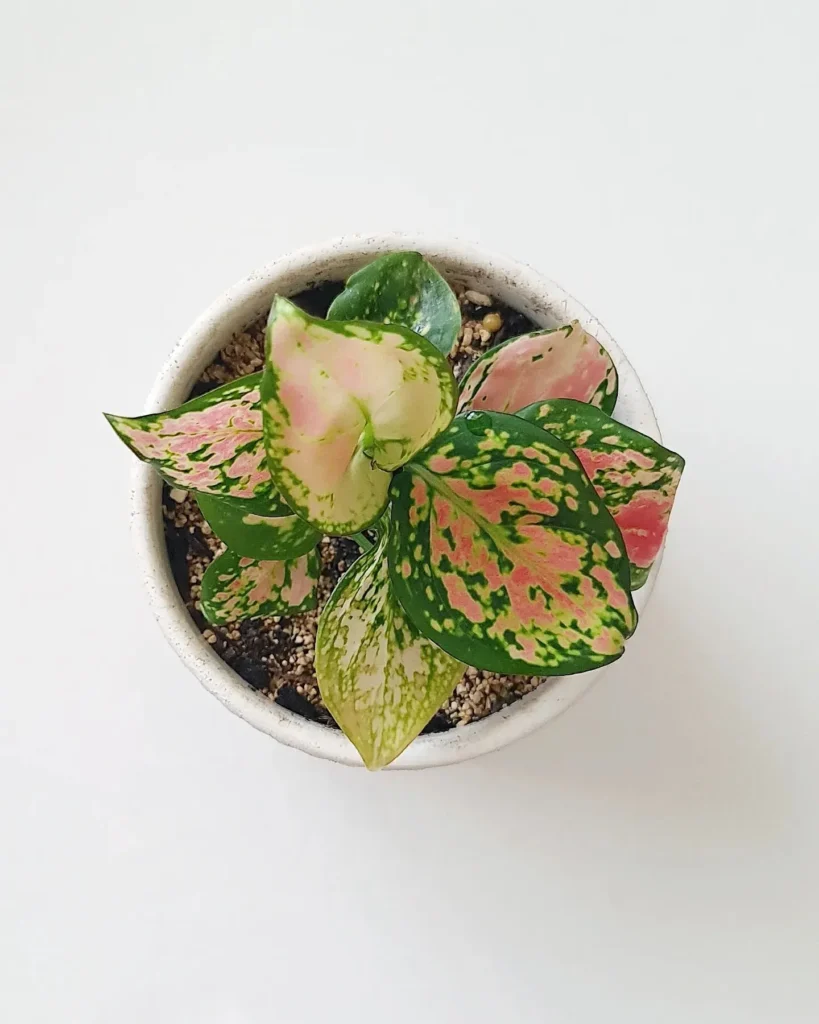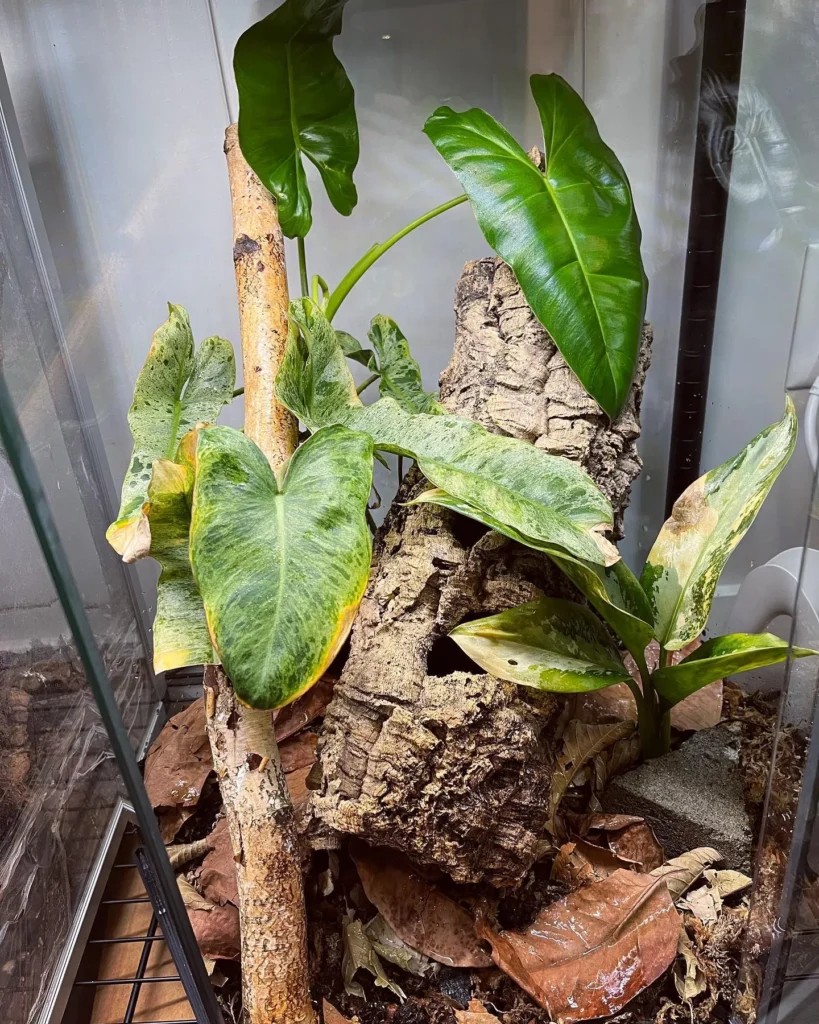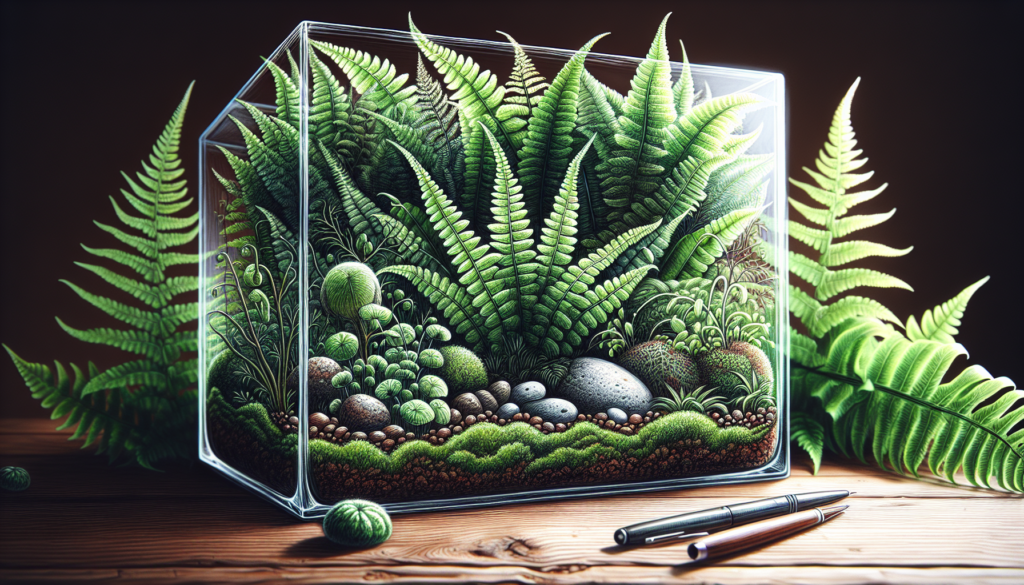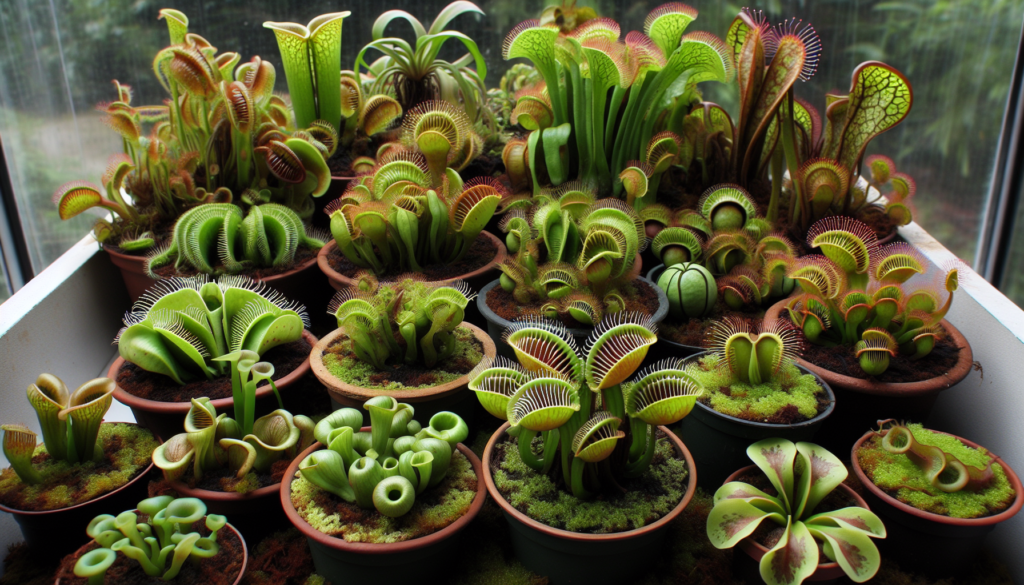Chinese Evergreen plants are known for their stunning foliage, which adds a touch of exotic beauty to any indoor space. The leaves of Chinese Evergreen come in a diverse range of colors and variegated patterns, making them a popular choice among plant enthusiasts.
Appearance of Chinese Evergreen
The foliage of Chinese Evergreen can feature shades of lush green, silver, white, pink, or even red. The colors are often complemented by striped, splotched, or symmetrical variegation, creating visually captivating patterns on the leaves.
The leaves themselves are typically long and can be oval or pointed in shape. They are supported by short stems, which give the plant a neat and compact appearance.
With their vibrant colors and unique variegation, Chinese Evergreen plants can serve as eye-catching focal points in any room. Their exotic foliage perfectly complements various decor styles, adding a touch of nature’s beauty to your indoor space.
Light Requirements for Chinese Evergreen
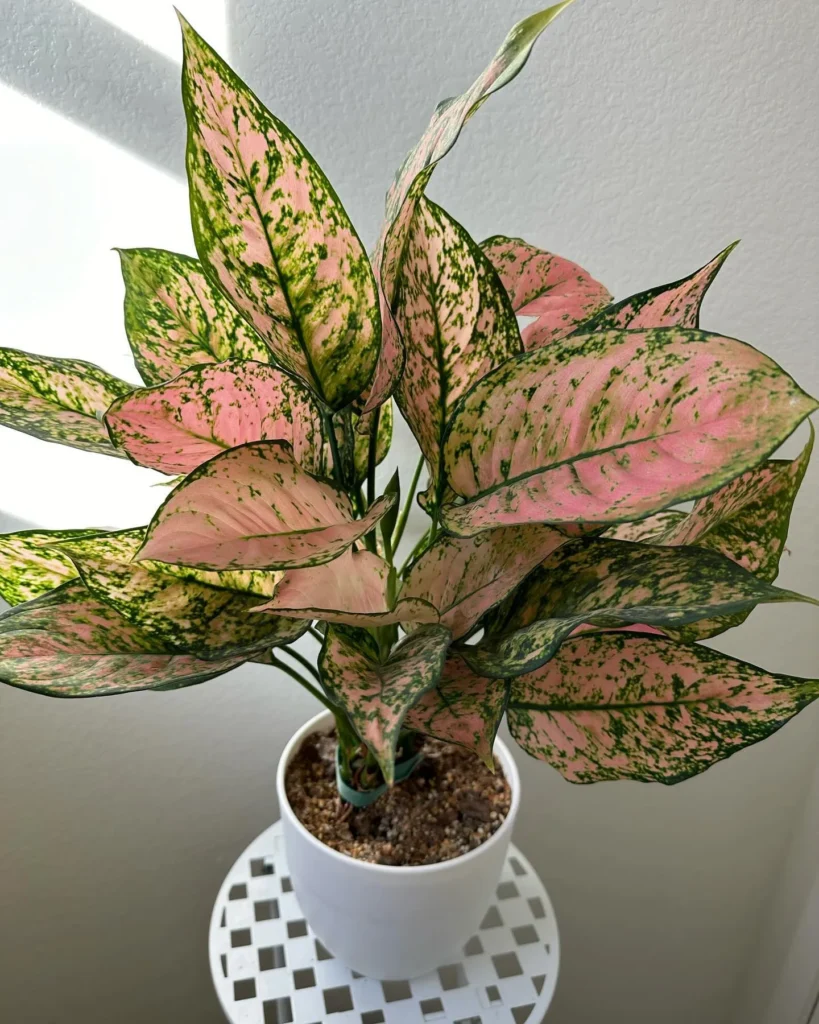
Chinese Evergreen plants are an excellent choice for indoor spaces with limited natural light. They have low-light requirements, making them perfect for areas that receive minimal sunlight. These plants can tolerate a range of light levels, from low to bright indirect light.
If you have a Chinese Evergreen variety with darker green leaves, it can tolerate dimmer conditions. This makes it an ideal choice for rooms with low lighting or for areas that are far from windows. On the other hand, if you have a Chinese Evergreen variety with light or colorful variegation, it requires brighter light to retain its vibrant colors and patterns. Placing it in a well-lit room with indirect sunlight is crucial for maintaining its visual appeal.
It’s important to note that Chinese Evergreen plants should not be exposed to direct sunlight. Direct sunlight can cause leaf burn and damage the plant. To create the ideal conditions for your Chinese Evergreen, find a spot with bright, indirect light and avoid placing it directly in front of a window.
Watering Chinese Evergreen
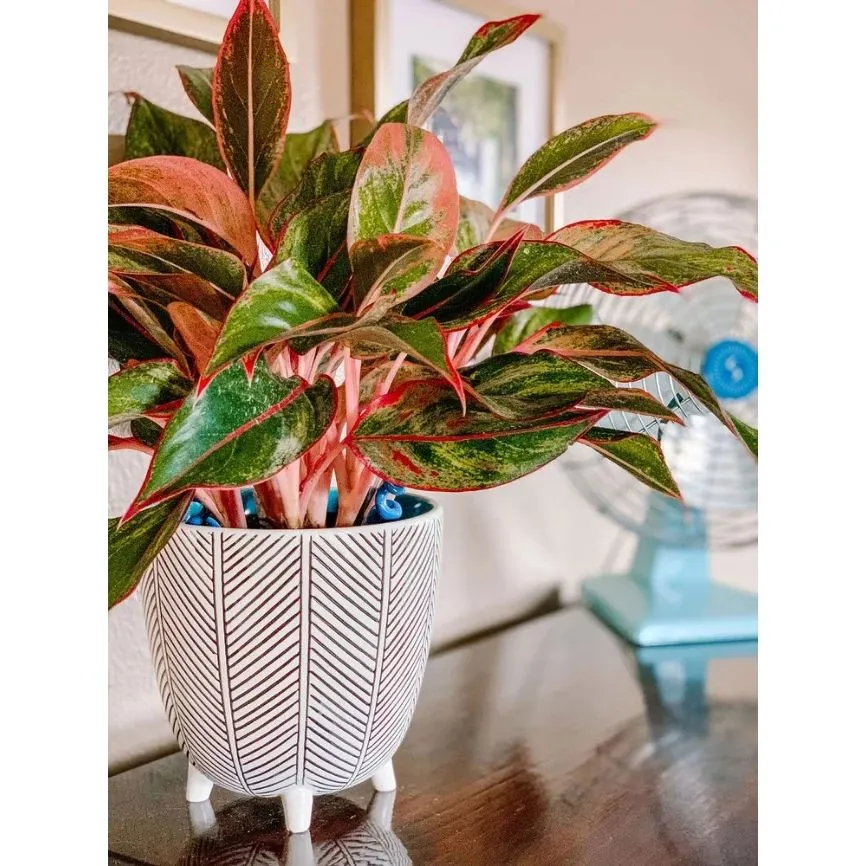
Proper watering is essential for maintaining the health and vitality of your Chinese Evergreen plant. By understanding the watering needs of this houseplant, you can ensure it thrives in your indoor space.
To water your Chinese Evergreen plant, it’s important to strike a balance between keeping the soil moist and avoiding overwatering. The soil should be evenly moist, but not soggy. Overwatering can lead to root rot and other problems.
A good rule of thumb is to allow the top layer of soil to dry out between waterings. You can check the moisture level by inserting your finger about 2 inches into the soil. If it feels dry to the touch, it’s time to water the plant.
During the winter months, when the Chinese Evergreen is semi-dormant, you’ll need to adjust the watering frequency. Reduce the amount of water you give the plant, as it requires less moisture during this time.
Tips for Watering Your Chinese Evergreen:
- Water your Chinese Evergreen when the top layer of soil feels dry to the touch about 2 inches down.
- Use room temperature water to prevent shock to the plant.
- Water the plant thoroughly until water drains out of the bottom of the pot, ensuring all the roots receive moisture.
- Allow any excess water to drain away, and never let the plant sit in standing water.
- Consider using a moisture meter to accurately monitor the moisture level of the soil.
Fertilizing Chinese Evergreen
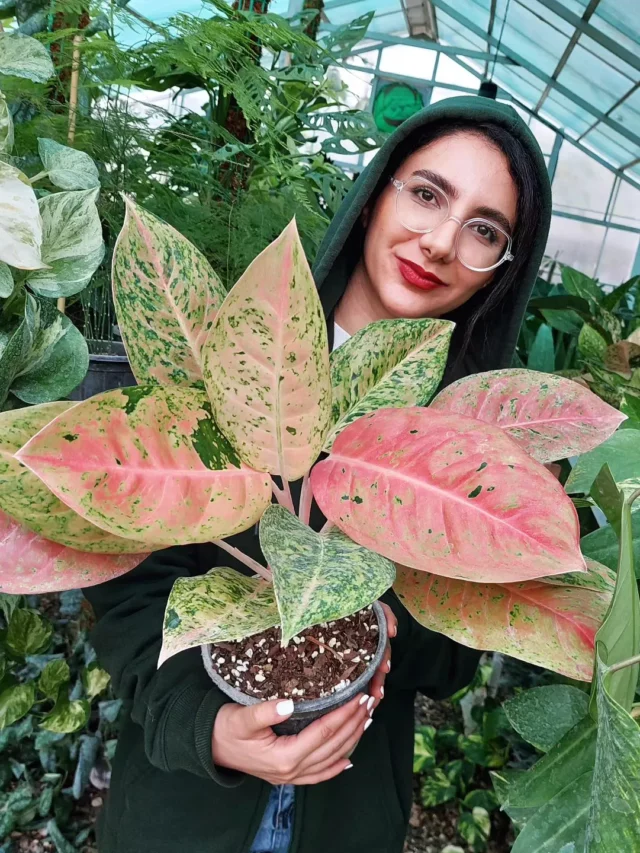
Proper fertilization is essential for the health and vitality of your Chinese Evergreen. By providing the right nutrients, you can help your plant thrive and maintain its vibrant foliage. Here are some tips for fertilizing your Chinese Evergreen:
- During the growing season, which typically occurs in spring and summer, it’s important to fertilize your Chinese Evergreen regularly. This is when the plant is actively growing and needs extra nutrients to support its development.
- Use a balanced liquid houseplant fertilizer specifically formulated for indoor plants. This type of fertilizer provides a mix of essential nutrients that your Chinese Evergreen requires.
- Dilute the fertilizer to half strength to avoid overfertilization. This ensures that you’re providing enough nutrients without overwhelming the plant’s delicate root system.
- Apply the fertilizer once a month, following the instructions on the package for proper application. This will help prevent salt buildup in the soil, which can damage the plant over time.
- Avoid fertilizing your Chinese Evergreen during the winter months when it enters a semi-dormant state. The plant’s growth slows down during this time, and it requires less nutrients. Save the fertilization for when it’s actively growing again.
Potting Chinese Evergreen

Proper potting is essential for the health and well-being of your Chinese Evergreen. By following the right potting techniques, you can ensure that your plant thrives and grows beautifully. Here are some tips for potting Chinese Evergreen:
- Use a well-draining potting mix: Chinese Evergreen plants require a well-draining potting mix to avoid waterlogged soil. A peat-based mix with an acidic pH between 5.5 and 6.5 is ideal.
- Choose a pot with drainage holes: Select a pot that has adequate drainage holes to prevent water from accumulating at the bottom. This allows excess water to escape, reducing the risk of root rot.
- Pot size: Opt for a pot that is no more than 1 to 2 inches wider than the root ball. This prevents the plant from being overwhelmed by a large pot and helps maintain the right balance of moisture.
- Repotting: Repotting should be done every 2 to 3 years or when the plant appears overgrown or rootbound. This gives the plant fresh soil and ample space for continued growth.
- Slightly potbound: Chinese Evergreen plants prefer to be slightly potbound, meaning they like their roots to fill the pot before being repotted. This promotes compact growth and encourages blooming.
Propagation of Chinese Evergreen

If you’re looking to expand your collection of Chinese Evergreen plants or share the beauty of this houseplant with others, propagation is the way to go. Chinese Evergreens can be propagated through a technique called root division, which is simple and highly successful.
The best time to propagate Chinese Evergreen is in spring when the plant is actively growing. Here’s a step-by-step guide on how to propagate Chinese Evergreen through root division:
- Carefully remove the parent plant from its pot, taking care not to damage the roots.
- Brush off excess soil to expose the root system.
- Gently pry apart the sections of the root ball or use a sharp, sterile knife to divide the plant into separate sections. Each section should have a healthy clump of roots.
- Replant each divided section in its own pot, using fresh, well-draining potting soil.
- Water the newly potted sections thoroughly, ensuring the soil is evenly moist.
Dividing the Chinese Evergreen through root division allows each section to develop its own root system, promoting healthy growth and vitality. Keep the newly potted plants in a warm, brightly lit area, but avoid direct sunlight.
Growth and Development of Chinese Evergreen

Chinese Evergreen plants are known for their slow growth rate, allowing them to maintain a compact and manageable size. With the right care and conditions, these plants can reach their full potential and become beautiful, lush specimens.
Chinese Evergreen plants typically have an upright, habit with an attractive clumping appearance. This makes them suitable for various indoor spaces, whether you have limited floor space or want to create a focal point in a larger room.
The size of Chinese Evergreen plants can vary, with heights ranging from 1 to 3 feet and widths spanning from 2 to 4 feet. As these measurements suggest, Chinese Evergreen plants have a moderately compact growth habit, making them versatile for different display options and arrangements.
The growth rate of Chinese Evergreen plants is influenced by various factors, including lighting conditions, fertilization practices, and overall care. Providing the right amount of light, balancing watering routines, and regularly fertilizing can help promote healthy growth and development of your Chinese Evergreen.
With their resilient nature and slow growth rate, Chinese Evergreen plants can remain in a condition that is easy to manage and attractive for an extended period. This makes them a popular choice for both experienced plant enthusiasts and beginners alike.
Pests and Diseases of Chinese Evergreen

While Chinese Evergreen plants are generally resistant to pests and diseases, it’s important to be aware of common houseplant issues that they may still encounter. Insects such as mealybugs, scale, spider mites, and aphids can infest the plant, affecting its overall health and appearance. Regularly inspect your Chinese Evergreen for any signs of pests, such as tiny insects, webbing, or sticky residue on the leaves.
If you notice any signs of pests, take immediate action to control their population. Start by isolating the affected plant to prevent the pests from spreading to other houseplants. There are several methods to control pests, depending on the severity of the infestation.
Methods for controlling common houseplant pests:
- Manual removal: Gently wipe the leaves with a soft, damp cloth to remove any visible pests.
- Water spray: Use a fine mist spray bottle to wash away pests and their eggs from the foliage. Repeat this process every few days until the infestation is under control.
- Natural remedies: Some natural remedies, such as neem oil or insecticidal soap, can be effective in controlling pests. Follow the instructions on the product labels for proper application.
- Chemical pesticides: If the infestation persists and natural remedies fail, you can use chemical pesticides specifically formulated for houseplants. Choose a pesticide that is safe for indoor use and follow the instructions carefully.
In addition to pests, Chinese Evergreen plants can also be susceptible to fungal diseases. Common fungal diseases that can affect Chinese Evergreen include anthracnose and leaf spot. These diseases typically manifest as dark spots or discoloration on the leaves.
Varieties of Chinese Evergreen

1. Silver Bay
Chinese Evergreen plants offer a wide range of varieties, each with its own unique characteristics and beauty. Whether you prefer bold colors, striking patterns, or subtle foliage, there is a Chinese Evergreen variety to suit your taste and complement your decor.
2. Maria
‘Maria’ is another popular cultivar of Chinese Evergreen, showcasing beautiful dark green leaves with silvery stripes. This variety adds a touch of sophistication and visual interest to your home or office.
3. Red Siam
For a vibrant and eye-catching display, consider the ‘Red Siam’ variety. This Chinese Evergreen features leaves with stunning red margins and veining, creating a dramatic contrast against the deep green foliage.
Display Ideas for Chinese Evergreen
Looking to enhance the aesthetics of your indoor space? Chinese Evergreen plants offer versatile display options that can elevate your indoor plant decor. Whether you’re a fan of modern minimalism or prefer a traditional touch, these creative plant arrangements are sure to add a green and vibrant touch to any room.
Standalone Specimens
Place your Chinese Evergreen plant as a standalone specimen on a tabletop, shelf, or mantel. The plant’s unique foliage and attractive variegation make it a stunning focal point in any room. Choose a decorative pot that complements your interior design style, opting for sleek and modern designs or rustic and traditional finishes.
Lush Groupings
For a lush and captivating display, consider grouping your Chinese Evergreen plant with other houseplants. Create a mini indoor jungle by combining different plant species with varying leaf shapes and colors. This dynamic arrangement adds depth and visual interest to your indoor space. Experiment with different heights and textures to create a balanced and harmonious display.
Decorative Pots and Plant Stands
Add a touch of style to your Chinese Evergreen display by using decorative pots or plant stands. Opt for pots in bold colors or interesting patterns that complement your overall decor. Elevate your plants by placing them on decorative plant stands, which not only add height but also create a visually appealing layered effect.
- Choose pots that have drainage holes to ensure proper water drainage and prevent overwatering.
- Consider using pots made from eco-friendly materials such as ceramic, terracotta, or sustainable plant-based materials.
Troubleshooting Chinese Evergreen
While Chinese Evergreen plants are generally easy to care for, they can sometimes encounter common issues that affect their leaves. If you notice your Chinese Evergreen’s leaves turning yellow, developing brown tips, or curling, it’s important to take action to address the problem.
One of the most common causes of leaf issues in Chinese Evergreen plants is improper watering. Overwatering can lead to root rot and yellowing leaves, while underwatering can cause the leaves to curl and develop brown tips. Ensure you are watering your plant properly by allowing the top layer of soil to dry out before watering again. Remember that every plant has different water requirements, so it’s essential to observe your Chinese Evergreen’s specific needs.
Other factors that can contribute to leaf problems include low humidity and temperature changes. Chinese Evergreen plants prefer moderate humidity levels, so if the air in your home is too dry, consider using a humidifier or placing a tray filled with water near the plant to increase moisture. Additionally, avoid exposing your Chinese Evergreen to sudden temperature fluctuations, as this can stress the plant and lead to leaf issues.
Pests can also affect Chinese Evergreen plants and cause damage to the leaves. Common pests that may infest your Chinese Evergreen include mealybugs, scale, spider mites, and aphids. Regularly inspect your plant for signs of pests, such as visible insects, sticky residue, or webbing. If you identify any pests, treat your plant with appropriate insecticides or try natural remedies like neem oil to control the infestation.
FAQ
Q: How do I care for my Chinese Evergreen?
A: To care for your Chinese Evergreen, keep it in a location with low to bright indirect light, water it when the top layer of soil feels dry, fertilize it with a balanced liquid houseplant fertilizer during the growing season, and pot it in a well-draining mix. Additionally, make sure to keep an eye out for pests and diseases, and take appropriate measures to address any issues.
Q: What does a Chinese Evergreen look like?
A: Chinese Evergreen plants have large, glossy leaves that come in a variety of colors and variegated patterns. The foliage can be shades of green, silver, white, pink, or red, with striped, splotched, or symmetrical variegation. The overall appearance of the plant is exotic and can complement any decor.
Q: What lighting conditions does a Chinese Evergreen require?
A: Chinese Evergreen plants thrive in low-light conditions, but they can tolerate a range of light levels, from low to bright indirect light. Varieties with darker green leaves can tolerate dimmer conditions, while those with light or colorful variegation require brighter light to retain their colors and patterns. Avoid placing Chinese Evergreen plants in direct sunlight, as it can cause leaf burn.
Q: How often should I water my Chinese Evergreen?
A: The soil of your Chinese Evergreen should be kept moist but not soggy. Allow the top layer of soil to dry out between waterings and water the plant when the soil feels dry to the touch about 2 inches down. During winter, when the plant is semi-dormant, reduce the frequency of watering.
Q: How should I fertilize my Chinese Evergreen?
A: Chinese Evergreen plants benefit from regular fertilization during the growing season. Use a balanced liquid houseplant fertilizer at half strength once a month. Avoid fertilizing during winter when the plant is semi-dormant. Overfertilizing can lead to salt buildup in the soil, which can damage the plant. Follow the instructions on the fertilizer package for proper application.
Q: What type of soil and pot should I use for my Chinese Evergreen?
A: Your Chinese Evergreen should be potted in a well-draining potting mix with an acidic pH between 5.5 and 6.5. Choose a pot with adequate drainage holes that is no more than 1 to 2 inches wider than the root ball to prevent root rot. Repotting should be done every 2 to 3 years or when the plant appears overgrown or rootbound. Chinese Evergreen plants prefer to be slightly potbound.
Q: How can I propagate my Chinese Evergreen?
A: Chinese Evergreen plants can be propagated through root division. The best time to do this is in spring. Carefully remove the plant from its pot, expose the roots by brushing off the soil, and gently pry apart the suckers or cut the root ball into sections using a sharp knife. Replant the divided sections in separate pots using fresh soil. This method is the easiest and most successful way to propagate Chinese Evergreen plants.
Q: How big does a Chinese Evergreen plant get?
A: Chinese Evergreen plants are slow-growing, with a moderate growth rate. They can reach a size of 1 to 3 feet tall and 2 to 4 feet wide, depending on various factors such as lighting conditions, fertilization, and overall care.
Q: What pests and diseases should I watch out for with my Chinese Evergreen?
A: While Chinese Evergreen plants are generally resistant to pests and diseases, they can still be susceptible to common houseplant issues. Insects such as mealybugs, scale, spider mites, and aphids can infest the plant. Regularly inspect the plant for any signs of pests and treat accordingly. Fungal diseases, such as anthracnose or leaf spot, can also affect the plant. Use a suitable fungicide if necessary and follow the instructions carefully.
Q: What are some popular varieties of Chinese Evergreen?
A: Chinese Evergreen plants come in a variety of cultivars, each with its own unique characteristics. Some popular varieties include ‘Silver Bay’ with silver streaked foliage, ‘Maria’ with dark green leaves and silvery stripes, and ‘Red Siam’ with red margins and veining. Each variety offers a different coloration and pattern, allowing you to choose the one that best fits your taste and decor.
Q: How can I display my Chinese Evergreen in my indoor space?
A: Chinese Evergreen plants can be displayed in various ways to enhance the aesthetics of your indoor space. They look great as standalone specimens on tabletops, shelves, or mantels. You can also group them with other houseplants to create a lush and vibrant display. Consider using decorative pots or plant stands to add a touch of style. Chinese Evergreen plants can be incorporated into any interior design style, from modern to traditional.
Q: What should I do if my Chinese Evergreen is experiencing problems?
A: Chinese Evergreen plants may occasionally experience common issues such as yellowing leaves, brown leaf tips, or curling leaves. These problems can be caused by factors such as overwatering, underwatering, low humidity, temperature changes, or pests. It’s important to identify the underlying cause and take appropriate measures to address it. By understanding how to troubleshoot common problems, you can ensure the overall health and well-being of your Chinese Evergreen.


